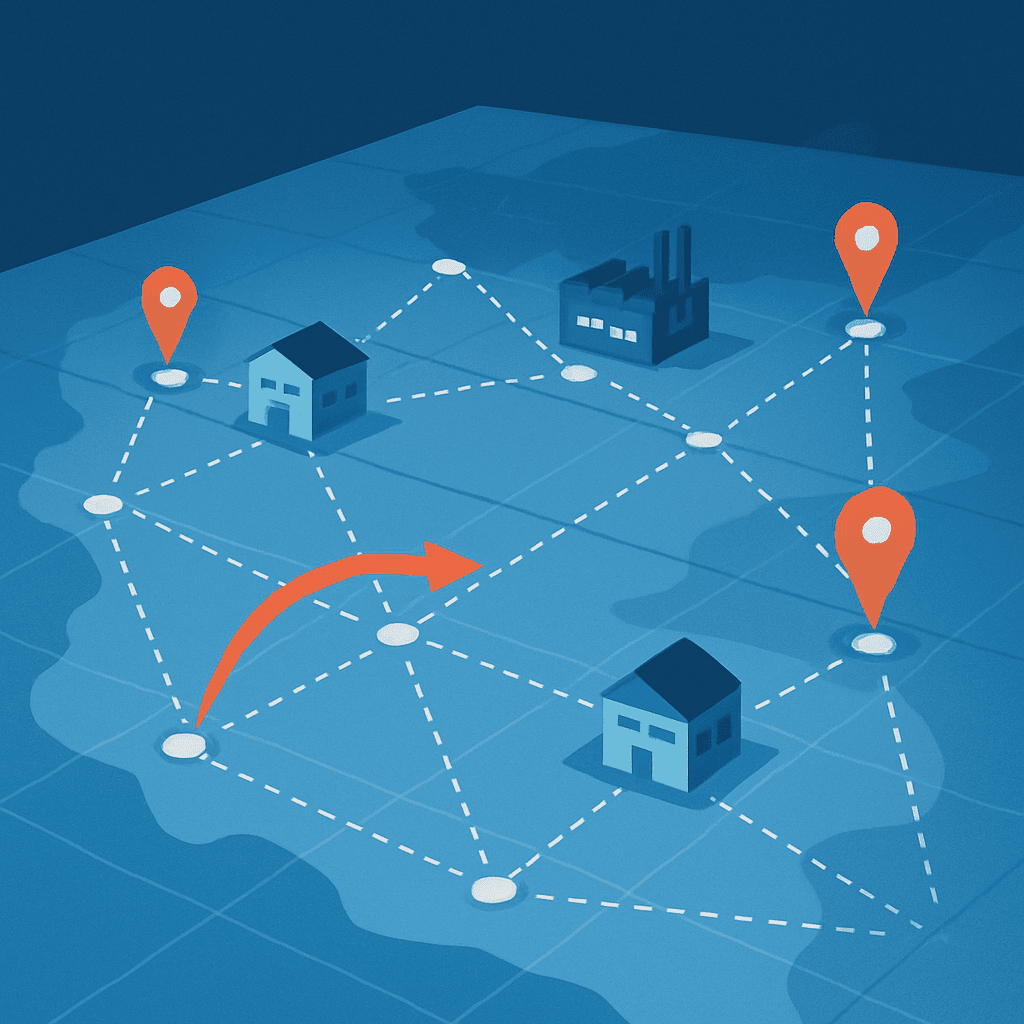
Planning for Resilience, Not Perfection
A few years ago, network design was something companies revisited once every year or two. Today, that pace no longer works. Shifts in demand, disruptions upstream, or even changes in tariffs or lead times can make a perfectly “optimal” plan obsolete overnight.
The challenge is no longer about creating the perfect plan — it’s about being able to reconfigure quickly and confidently.
Planning for Stability in an Unstable World
Market changes rarely give advance notice. We’ve seen logistics teams caught off guard by:
- Unexpected surges in demand
- Sudden shortages from a key supplier
- Regional disruptions or regulatory changes
In each case, the companies that responded best weren’t the ones with the most detailed models — they were the ones who could adjust the fastest.
That means having a network that is:
- Designed with multiple paths (not single dependencies)
- Supported by tools that allow rapid scenario testing
- Built to balance cost, risk, and service under new conditions
From Annual Optimization to Ongoing Reconfiguration
Reconfiguring a network used to be a project. Now, it's a process — and often a monthly one.
- It starts by tracking what matters:
- Lead time fluctuations
- Regional cost shifts
- Tariff changes or sourcing delays
- Customer growth in unexpected areas
With the right visibility, logistics leaders can explore questions like:
- “What happens if this supplier underperforms next month?”
- “What if we reposition inventory closer to demand?”
- “How much would we save with an alternate route or mode?”
And more importantly — they can get answers in minutes, not weeks.
Making Replanning Part of the Culture
Some of the most resilient teams we’ve seen don’t just react better — they expect change.
They build workflows around it. They give planners tools they can use directly. They test what-if questions frequently, not just when there’s a crisis.
Because in the end, the value of a supply chain plan is not how good it is the day it’s built — but how easily it can evolve when the world shifts.

